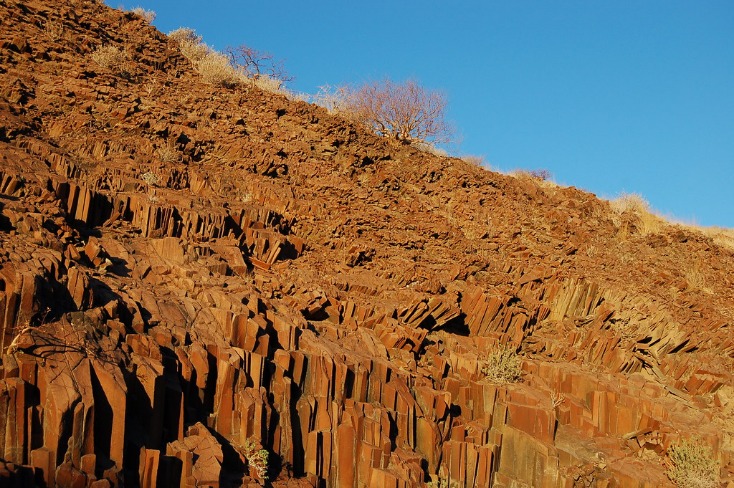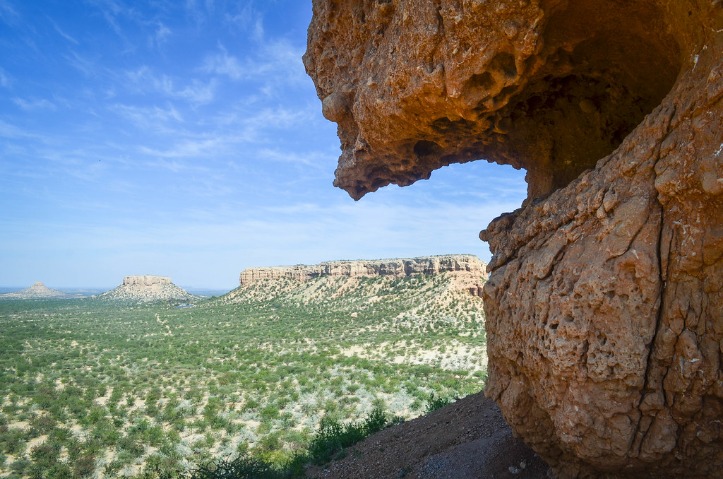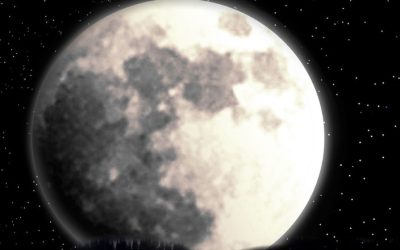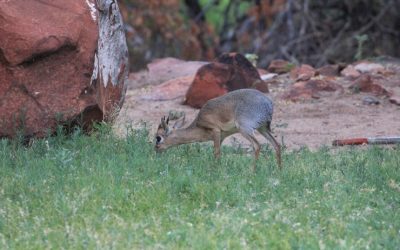Geographical Overview of Damaraland
Damaraland is a vast and rugged landscape located in the northwestern part of Namibia, renowned for its striking natural beauty and unique geological features. Characterized by rugged mountains, expansive deserts, and ancient rock formations, this region offers a diverse environment that is home to various wildlife and plant species. Its geographical landscape is shaped by tectonic activity and erosion, creating dramatic valleys and cliffs that attract nature enthusiasts and explorers alike.
Location and Boundaries
Damaraland is a rugged and scenic region located in northwestern Namibia, renowned for its striking landscapes and rich cultural heritage. It is situated within the Kunene Region, extending across an area characterized by mountains, desert plains, and rocky formations. The region borders Angola to the north and the Atlantic Ocean to the west, providing it with a diverse geographical setting. To the south and east, Damaraland is bordered by other Namibian regions, including the Omusati, Oshana, and Oshikoto Regions. Its location places it at the intersection of arid desert environments and more lush, rugged terrains, making it a unique area with distinctive geographical features. This strategic positioning contributes to its ecological diversity and cultural significance, making Damaraland an important area for conservation and tourism in Namibia.
Climate and Topography
Damaraland, located in northwestern Namibia, is a vast and rugged region renowned for its striking landscapes and rich cultural heritage. This arid area features a mixture of semi-desert plains, rocky outcrops, and mountains, making it a unique geographical zone within Namibia. The terrain is characterized by dramatic granite formations, scattered baobab trees, and ancient desert-adapted plants, providing a picturesque backdrop for visitors and researchers alike.
The climate in Damaraland is predominantly desert-like, with low and unpredictable rainfall averaging around 150 to 300 millimeters annually. Summers tend to be hot with temperatures often exceeding 35°C (95°F), while winters are cooler and milder. Due to its arid conditions, Damaraland experiences high evaporation rates and significant temperature fluctuations between day and night, which influences the local flora and fauna.
The topography of Damaraland is marked by rugged mountain ranges such as the Brandberg Mountain, the highest peak in Namibia, and the Tmond Mountains. The landscape includes expansive plains, rugged valleys, and rocky ridges that result from geological processes over millions of years. These features, combined with sparse vegetation, create a challenging environment yet support specialized wildlife and ancient rock art sites that highlight the region’s historical significance.
Natural Resources and Landforms
Damaraland is a vast and rugged region located in northwestern Namibia, known for its striking landscapes, diverse natural resources, and unique landforms. This semi-arid area features dramatic geological formations and an expansive wilderness that is both ecologically significant and geologically intriguing.
- Geographical Location: Damaraland lies in the northwestern part of Namibia, spanning across the Kunene and Omusati regions, characterized by its mountainous terrain and expansive plains.
- Landforms: The region is renowned for its impressive landforms including the towering Brandberg Mountain, Namibia’s highest peak, and the Twyfelfontein area with its ancient rock engravings. The area also features rugged valleys, plateaus, and desert plains.
- Natural Resources:
- Minerals: Damaraland is rich in mineral deposits such as granite, quartz, and small deposits of copper and other metals.
- Wildlife and Game: The region supports a variety of wildlife including desert-adapted elephants, black rhinos, lions, and numerous bird species, especially in conservation areas like the Palmwag Concession and Damaraland Volunteer Project.
- Vegetation: The area’s flora primarily consists of hardy shrubs, succulents, and drought-resistant trees adapted to the semi-arid climate.
- Landforms and Geology: The landscape is shaped by volcanic activity and erosion processes, resulting in unique formations such as volcanic plugs, rugged mountains, and canyon systems that highlight Namibia’s complex geological history.
Historical and Cultural Significance
Damara Land in Namibia holds a profound historical and cultural significance, reflecting the rich heritage of the Damara people. This region is a testament to centuries of traditions, ancient settlements, and cultural practices that have been preserved and passed down through generations. Understanding its historical background and cultural importance provides valuable insights into the identity and legacy of the Damara community in Namibia.
Origins and Early Inhabitants
Damaraland in Namibia holds a rich historical and cultural significance, reflecting the resilience and traditions of its indigenous peoples. This region is historically inhabited by the San and Nama communities, whose ancestors have lived in the area for thousands of years. Their enduring presence is evident in ancient rock art and archaeological sites that reveal their early ways of life, beliefs, and social structures. The origins of Damaraland’s inhabitants trace back to these indigenous groups, who adapted to the challenging desert environment while maintaining their cultural identities. Over centuries, Damaraland has played a vital role in the cultural landscape of Namibia, showcasing a legacy of craftsmanship, oral traditions, and spiritual practices that continue to be celebrated today. The region’s historical significance is further underscored by its association with early trade routes and interactions with explorers, colonialists, and colonial powers, which have shaped its diverse cultural fabric.
Historical Events and Colonial Impact
Damaraland, located in northwestern Namibia, holds a profound historical and cultural significance as a region inhabited by the resilient Himba people and other indigenous groups. Its ancient landscapes are dotted with archaeological sites that reveal human presence dating back thousands of years, showcasing a rich tapestry of early history and cultural traditions. The area is known for its unique blend of natural beauty and cultural heritage, with traditional practices and craftsmanship still actively preserved.

Historically, Damaraland played a role in the colonial history of Namibia. During the German colonial rule in the early 20th century, the region was part of German South West Africa, where colonization efforts impacted the local populations and their ways of life. The resistance by local communities against colonial authorities and subsequent conflicts are notable events that contributed to Namibia’s history of struggle for independence. The colonial impact also introduced new administrative and infrastructural elements that continue to influence the region today.
Today, Damaraland’s cultural heritage is celebrated through preservation efforts of its indigenous customs and recognition of its historical sites. Its landscape holds remnants of its colonial past, including historical ruins and monuments, which serve as a reminder of the complex history that shaped the region. Damaraland’s significance lies not just in its natural beauty but also in its role as a symbol of resilience, cultural identity, and historical continuity in Namibia.
Indigenous Cultures and Traditions
Damaraland in Namibia holds a rich tapestry of historical and cultural significance, particularly for its indigenous communities. It is renowned for its deep-rooted traditions, ancient rock art, and resilient populations that have preserved their unique identities over centuries. These cultural practices and historical landmarks offer insight into the profound connection between the land and its people, emphasizing the importance of indigenous heritage.
The Damaraland region is especially significant for the Herero and Damara peoples, who have maintained their cultural traditions despite external influences and historical upheavals. Their presence is reflected in their language, customs, and spiritual practices, which continue to shape the social fabric of the area. The region’s history also encompasses periods of colonization, resistance, and the fight for cultural preservation, making it a vital site for understanding Namibia’s broader historical narrative.
Indigenous cultures in Damaraland are characterized by a strong emphasis on community, storytelling, and respect for nature. Traditional rituals, craftwork, and oral histories are integral to maintaining their identities and passing knowledge through generations. The ancient rock art scattered throughout the landscape serves as a testament to their long-standing presence and their spiritual relationship with the environment.
- Ancient rock engravings depicting hunting, wildlife, and spiritual symbols, which are thousands of years old and form a UNESCO World Heritage site.
- Traditional ceremonies and dances that celebrate seasonal changes, ancestors, and community bonds.
- Craft traditions such as ironwork, beadwork, and pottery that reflect the artistic expression of local tribes.
- Language preservation efforts for indigenous dialects that are key to cultural continuity.
Flora and Fauna
Damaraland in Namibia is a breathtaking region renowned for its rich and diverse flora and fauna. The landscape, shaped by rugged mountains and vast deserts, provides a unique habitat for a variety of plant and animal species. This area offers a glimpse into the resilience of life in one of Africa’s most striking and arid environments, making it a fascinating destination for nature enthusiasts and eco-travelers alike.
Native Plant Species
Damara-land in Namibia is home to a rich diversity of flora and fauna, reflecting its unique desert and semi-arid ecosystems. The region supports a variety of native plant species that have adapted to its harsh conditions, as well as an array of animals that thrive in its landscapes.
- Engelmannia (Engelmannia gigantea): A resilient shrub that is commonly found in the arid parts of Damara-land, providing essential cover and food for local wildlife.
- Quiver Tree (Aloe dichotoma): Iconic to Namibia, this succulent is well-adapted to drought and is a crucial part of the ecosystem, offering habitat for small animals and insects.
- Camel Thorn Tree (Vachellia erioloba): A vital tree species that provides shade and food for many animals, and is an important component of rehabilitating degraded land.
- Sweet Thorn (Vachellia karroo): Widespread across the region, it produces edible pods and offers shelter, supporting both fauna and local communities.
- Various Cacti and Succulents: Including species like Euphorbia and Aloe, which are adapted to the desert climate and contribute to soil stabilization.
- Oryx (Oryx gazella): The Namibian oryx is a desert-adapted antelope known for its impressive ability to survive without water for long periods.
- Springbok (Antidorcas marsupialis): Widespread in Damara-land, these agile antelopes are well-suited to the open plains and arid environment.
- Diamond Dust Beetle: An insect species that has evolved to endure extreme temperatures and scarce water resources.
- Lizard species: Including geckos and monitor lizards that play essential roles in controlling insect populations.
- Birdlife: Such as the black eagle and various raptors, which are vital for maintaining ecological balance in the region.
Wildlife and Conservation Areas
Damaraland in Namibia is a region renowned for its stunning landscapes, rich biodiversity, and efforts toward wildlife conservation. It is characterized by rugged mountains, open plains, and unique geological formations, providing a vital habitat for a variety of flora and fauna. The area supports endemic plant species adapted to arid conditions, such as succulents and hardy shrubs that thrive in the desert environment.
Wildlife in Damaraland includes species such as desert-adapted elephants, black rhinoceroses, oryx, and kudu, many of which have evolved to survive in harsh conditions with limited water sources. These animals have become emblematic of Namibia’s conservation success stories, thanks to dedicated efforts to protect their populations and habitat. The region is also home to many bird species, including raptors and desert-adapted birds, offering excellent opportunities for birdwatching.
There are several conservation areas and community-managed programs in Damaraland that focus on protecting wildlife and promoting sustainable tourism. These initiatives have helped preserve fragile ecosystems while providing benefits to local communities through eco-tourism and employment. Conservation Areas such as the Palmwag Concession and the Torra Conservancy play crucial roles in safeguarding endangered species and maintaining biodiversity in this unique desert landscape.
Endangered Species of the Region
Damara Land in Namibia is home to a diverse array of flora and fauna, reflecting its unique ecological landscape. The region’s vegetation includes hardy desert plants such as succulents, acacia trees, and grasses that have adapted to the arid climate. These plants provide vital sustenance and shelter for local wildlife. The fauna of Damara Land encompasses species like oryx, springbok, and desert-adapted elephants, which have evolved to survive in harsh conditions. Additionally, the region hosts various bird species, including ostriches and local raptors, contributing to its ecological richness. However, several species in this area are endangered due to habitat loss, poaching, and climate change. Notable endangered species include the black rhinoceros and desert-adapted lions. Conservation efforts are crucial to protect these species and preserve the biodiversity of Damara Land for future generations.
Economic Activities in Damaraland
Damaraland, a rugged and scenic region in Namibia, is characterized by diverse economic activities that sustain its communities and environment. The area’s economy is primarily based on agriculture, tourism, and mining, with a focus on sustainable development. Local residents engage in farming activities, including cattle ranching and crop cultivation, while attracting tourists with its unique landscapes, wildlife, and cultural heritage. Additionally, mineral resources such as granite and other geological materials contribute to the region’s economic growth. Overall, Damaraland’s economic activities play a vital role in supporting its local population and preserving its natural and cultural heritage.
Agriculture and Livestock Farming
Damaraland in Namibia is characterized by a diverse range of economic activities, with agriculture and livestock farming playing a significant role in the local economy. The region’s semi-arid climate influences the types of crops cultivated and the breeds of animals raised, shaping the livelihoods of its inhabitants.
- Crop cultivation is often focused on drought-resistant crops such as millet, sorghum, and maize, which are vital for local food security.
- Livestock farming is a predominant activity, with farmers primarily raising cattle, goats, and sheep adapted to the arid environment.
- Pastoralism is a traditional way of life in Damaraland, supporting both subsistence needs and small-scale commercial markets.
- Community-based conservation initiatives also promote sustainable use of natural resources, aiding in the preservation of wildlife and supporting eco-tourism.
- Erratic rainfall patterns and environmental challenges necessitate adaptive farming techniques and resource management strategies to sustain agricultural productivity.
Mining and Natural Resources
Damaraland in Namibia is a region characterized by diverse economic activities, with a significant emphasis on mining and natural resources. The area’s rich mineral deposits have historically driven economic development, attracting both local and international companies. Mining operations primarily focus on minerals such as gold, diamonds, and various gemstones, which contribute substantially to Namibia’s overall mineral exports. Additionally, the region benefits from its natural resources like granite and other building materials that support local construction industries. The sustainable utilization of these resources is vital for economic growth, providing employment opportunities for local communities and fostering infrastructure development. Overall, mining and natural resource extraction remain cornerstone elements of Damaraland’s economy, shaping its growth and development trajectory.
Tourism and Ecotourism Initiatives
Damaraland in Namibia is a region rich in diverse economic activities, with tourism playing a vital role in its development. The area’s unique landscapes, rock formations, and archaeological sites attract numerous visitors seeking to explore its natural beauty and cultural heritage.
Tourism in Damaraland is centered around its impressive geological features such as the Twyfelfontein Rock engravings, a UNESCO World Heritage Site, and the Brandberg Mountain, home to ancient rock art. Wildlife viewing is also popular, with opportunities to see desert-adapted elephants, black rhinos, and other species in their natural habitat.
Ecotourism initiatives in Damaraland aim to promote sustainable travel practices while conserving the environment and local culture. Community-based tourism projects encourage local involvement, providing economic benefits to residents while preserving traditional livelihoods. Such efforts include establishing eco-lodges, guided safaris, and cultural tours that raise awareness about conservation and the importance of protecting Damaraland’s unique ecosystem.
Overall, Damaraland’s focus on ecotourism not only enhances its appeal as a travel destination but also contributes to ecological preservation and community empowerment, ensuring that its natural and cultural assets are sustained for future generations.
Tourist Attractions and Landmarks
Damaraland in Namibia is a captivating desert landscape filled with unique tourist attractions and historic landmarks. Known for its breathtaking scenery, ancient rock formations, and vibrant cultural history, this region offers travelers an extraordinary experience. From awe-inspiring geological wonders to significant archaeological sites, Damaraland is a must-visit destination for those seeking natural beauty and historical significance.
Brandberg Mountain and White Lady Rock Art
Damara Land in Namibia is renowned for its stunning natural landmarks and rich cultural heritage, making it a popular destination for travelers seeking unique experiences. Among its most famous attractions is Brandberg Mountain, which rises dramatically into the desert sky and is considered Namibia’s highest peak. This massif is not only a striking geological formation but also a spiritual site for local communities.
One of the highlights of the area surrounding Brandberg Mountain is the White Lady Rock Art. This ancient Bushmen painting depicts a mysterious female figure and is believed to be thousands of years old. The artwork provides invaluable insights into the early inhabitants of the region and their way of life. Visitors often hike to see the White Lady and explore other prehistoric art hidden in the caves and rock shelters, offering a glimpse into Namibia’s deep historical roots.
Petroglyphs and Caves
Damaraland in Namibia offers a fascinating array of tourist attractions and landmarks that highlight the region’s rich cultural and natural history. Visitors can explore majestic geological formations, ancient rock engravings, and impressive cave systems that tell stories dating back thousands of years. The area is renowned for its striking landscapes, including rugged mountains and desert plains, which provide a stunning backdrop for adventure and exploration.
One of the most remarkable features of Damaraland is its collection of petroglyphs, which are ancient rock carvings created by the early inhabitants of the region. These petroglyphs depict various scenes, including animals, human figures, and symbols, offering a glimpse into the lives and beliefs of the indigenous communities that once thrived here. Many of these carvings can be found in designated areas protected for their historical significance.
The caves in Damaraland are another major attraction, famous for their archaeological and cultural value. Guided tours often reveal the intricate cave systems and the artwork within them, providing insights into the spiritual practices and daily life of ancient peoples. Some caves also contain fossilized remains and artifacts, making them important sites for understanding Namibia’s prehistoric past.
Twyfelfontein UNESCO World Heritage Site
Twyfelfontein, also known as the “Fount of Lost Paths,” is a UNESCO World Heritage Site located in the Damaraland region of Namibia. It is renowned for its remarkable collection of ancient rock engravings and petroglyphs created by early indigenous peoples. This site offers a unique glimpse into the region’s prehistoric history and cultural heritage.
- Rock Engravings: Twyfelfontein features over 2,500 engravings depicting animals such as elephants, giraffes, and rhinoceroses, as well as symbols and human figures that provide insight into early spiritual beliefs and daily life.
- Ancient Artifacts: The site contains stone tools and other relics that date back thousands of years, highlighting human activity in the area during the late Stone Age.
- Natural Scenery: Surrounded by striking desert landscapes, rugged mountains, and unique geological formations, Twyfelfontein offers spectacular scenery alongside its archaeological significance.
- Wildlife and Nature: The area is home to diverse wildlife, including desert-adapted elephants, black rhinos, and cheetahs, making it an ideal location for eco-tourism and safaris.
- Cultural Significance: Twyfelfontein holds deep spiritual and cultural importance for the local Damara and Herero communities, who preserve and honor their heritage at the site.
Challenges and Development Prospects
Damara Land in Namibia faces a range of challenges that impact its social, economic, and environmental sustainability. Addressing issues such as limited resources, infrastructure development, and preserving cultural heritage is crucial for the region’s growth. Despite these obstacles, there are promising prospects for development through sustainable initiatives, tourism, and community empowerment, paving the way for a resilient and thriving Damara Land in the future.
Environmental Conservation Issues
Damaraland in Namibia faces a range of challenges related to environmental conservation and sustainable development. The region’s unique landscape and rich biodiversity are under threat from various human activities and climate change. Addressing these issues is crucial for preserving its natural heritage and promoting eco-friendly growth.
Key challenges include habitat degradation caused by livestock overgrazing, illegal poaching of wildlife such as desert-adapted elephants, and the impacts of climate change leading to droughts and water scarcity. Additionally, the expanding human settlements and tourism infrastructure pose risks to fragile ecosystems.
However, there are promising development prospects that can help overcome these challenges. Initiatives focused on community-based conservation, eco-tourism, and sustainable resource management are gaining momentum. These efforts aim to balance ecological preservation with socioeconomic development for local communities.
- Implementing sustainable tourism practices that generate income while conserving natural resources
- Promoting community involvement in conservation projects to ensure local benefits and stewardship
- Enhancing water management and resilience strategies against climate change impacts
- Supporting alternative livelihoods to reduce dependence on environmentally sensitive activities
- Strengthening legal frameworks to combat poaching and illegal resource extraction
Infrastructure and Access Improvements
Damaraland in Namibia faces a variety of challenges related to infrastructure and access, which impact both economic development and local communities. Limited transportation networks and inadequate road conditions hinder the easy movement of goods and people, restricting tourism potential and access to essential services. Additionally, the sparse infrastructure for healthcare, education, and utilities hampers community growth and quality of life.
Despite these challenges, there are significant prospects for development in the region. Investment in sustainable infrastructure projects, such as improved road networks, renewable energy sources, and healthcare facilities, can boost economic activity and improve living standards. Promoting eco-tourism and cultural heritage can serve as vital drivers of income, encouraging community involvement and conservation efforts.
Efforts to enhance infrastructure and access are likely to include community-based initiatives, government support, and partnerships with private investors. Emphasis on environmentally friendly and culturally sensitive development strategies will be essential to ensure sustainable growth. The evolving focus on renewable energy and tourism, coupled with regional cooperation, offers promising opportunities to transform Damaraland into a more accessible and prosperous area while preserving its unique natural and cultural identity.
Community Development and Sustainable Tourism
Damaraland in Namibia faces several challenges and opportunities related to community development and sustainable tourism. As a region rich in cultural heritage and natural beauty, balancing economic growth with environmental preservation remains a primary concern.
Key challenges include limited infrastructure, environmental degradation, and the need to empower local communities while protecting their cultural identity. Additionally, managing the increasing influx of tourists to prevent ecological damage is crucial for long-term sustainability.
However, development prospects are promising. Initiatives focused on community-based tourism encourage local participation and benefit-sharing, fostering sustainable economic growth. The region’s unique landscapes and heritage sites attract eco-tourists and adventure travelers, which can generate income and employment opportunities.
To capitalize on these prospects, strategies such as investing in eco-friendly infrastructure, promoting responsible tourism practices, and supporting indigenous communities are essential. Enhancing collaborations between government, NGOs, and communities can facilitate sustainable development and ensure that tourism benefits are equitably distributed.
Overall, with proper planning and conservation efforts, Damaraland has the potential to become a model of sustainable community-driven tourism that preserves its natural and cultural treasures for future generations.





0 Comments